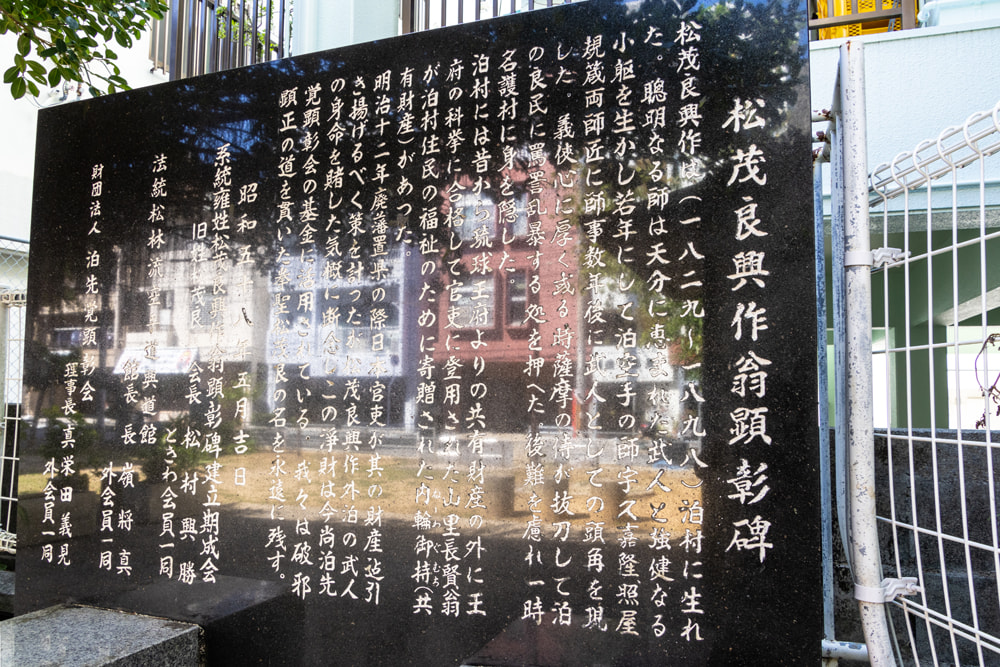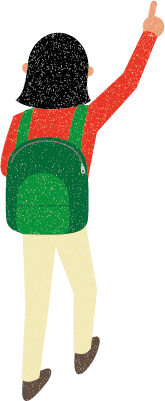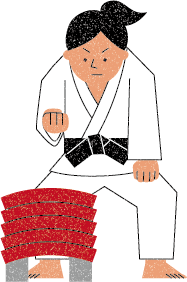Introducing the "Matsumora Kosaku Commemorative Monument," in Tomari, Naha City, a historical site of the Shuri Tomari-te lineage | Okinawa Dento Karatedo Shinkokai
Naha city

A memorial monument honoring Matsumora Kosaku, who inherited teachings from Uku Karyu and Teruya Kishin, the recognized founders of "Tumai-di," one of the four major styles of Okinawa Karate, and later helped promote and revived Tumai-di, thus engraving his name in the history of the Ryukyu, further known as "Bushi Matsumora," is located in a park within the quiet residential area of Tomari, Naha City.
He was born and raised in Tomari Village (present-day Tomari, Naha City), and Matsumora, through his dedication to karate training, has many stories of bravery from his youth. On one occasion, Matsumora fended off Satsuma clansmen who drew their swords from their scabbards after increased tension, utilizing the masterful techniques he had developed through rigorous training; at other times, as a member of a village delegation facing desperate circumstances due to the government's unreasonable demands, he managed to repel such confrontations, and his stories of bravery reflected his resilience during the tumultuous period of transition from Ryukyu to Okinawa, continued to be shared until he lived out his full lifespan at the age of seventy.
A number of karate masters, including Iha Kotatsu and Motobu Choki—who both went on to become great masters—were disciples of Matsumora Kosaku. Among these, the students of Chotoku Kyan gave rise to major styles based on the Tomari-te style, such as Zenryo Shimabukuro's Shorin-Ryu, Joen Nakazato's Shorinji-Ryu, Shoshin Nagamine's Matsubayashi-Ryu, and Tatsuo Shimabukuro's Isshin-Ryu.



